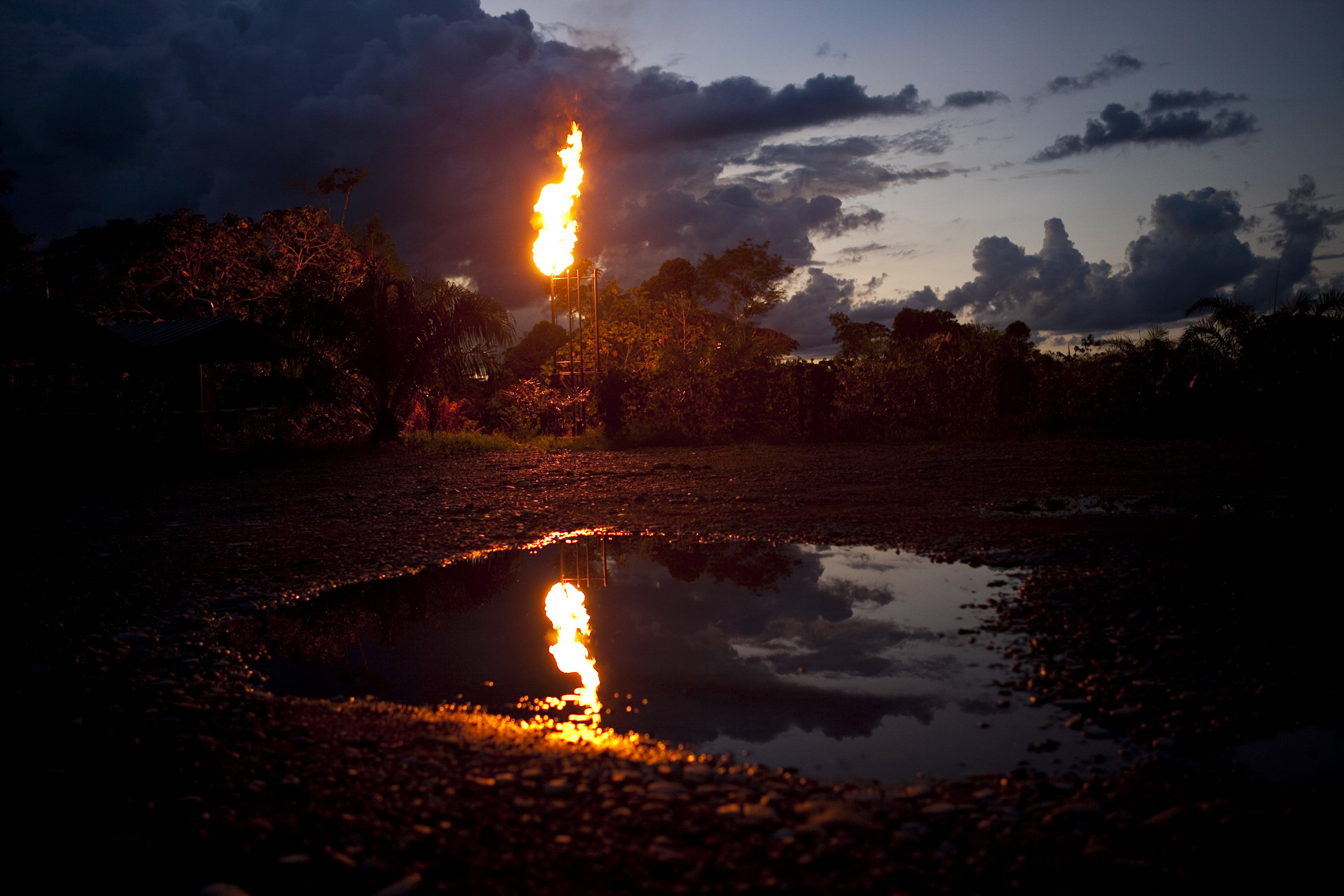
From the Grassroots to the Courtroom
Leaders of indigenous and farmer communities formally established the Frente de Defensa de la Amazonía (FDA) in the Ecuadorian province of Sucumbíos on May 15, 1994. Among the original founders was Luis Yanza, a 2008 recipient of the Goldman Environmental Prize; Elias Piaguaje, leader of the Secoya indigenous group; Veronica Urbina, at the time a leader of the women's organization in the city of Coca; local farmers and leaders Medardo Zhingre; Patricio Cango; Mariana Jimenez, and many others too numerous to mention.
In the Aguinda case, the FDA represents the interests of all affected indigenous and farmer communities in the affected area of 1,500 sq. miles in the provinces of Sucumbíos and Orellana. Locals call the area where Chevron operated the “Amazon Chernobyl” given the extent of the toxic poisoning of local waterways, soils, and rivers.
The FDA grew out of organizing efforts by various grassroots organizations that sprang up in the 1980s in the area affected by Chevron's operations. Most of the organizations were nurtured by the Carmelita Mission and the Church of San Miguel of Sucumbíos, under the leadership of the late and revered Monsignor Gonzalo López Marañón.
The FDA is based in the Sucumbíos province and was created primarily to support “Los Afectados” (The Affected Ones), the name used to describe the tens of thousands of indigenous peoples and farmers who are the victims of Chevron's contamination in the Ecuadorian Amazon and the attendant cancer outbreak and public health crisis. These communities had joined forces to file a class action case against Texaco (Chevron's predecessor company) in New York in 1993.
The FDA represents Los Afectados in the Aguinda litigation but also has expanded its mandate to encompass the defense of communities from harm caused by all of the major extractive industries operating in the area, including mining and agriculture.
Mobilizing to Protect Communities and the Environment
In 1996, in cooperation with other NGOs and ally communities, the FDA founded the Environmental Monitoring Network to better document the contamination caused by the extractive industries in Ecuador's Northern Amazon. The FDA also began other outreach efforts, expanded into human rights work generally, and we provided legal support to communities other than those directly impacted by Chevron's operations.
The FDA also took the lead in organizing groups in the area and at the national level to support the Aguinda lawsuit and broadened its efforts internationally, recently signing a protocol with Canada's national indigenous federation (the Assembly of First Nations) and Ecuador's national indigenous federation (CONAIE) to hold Chevron accountable for environmental harm in both countries.
Clean Water to Carry on the Struggle
In 2004, the FDA established an organizing school to educate and develop leaders from area communities to carry on the struggle against local environmental degradation. In 2008, at the request of the local communities who form the organization's base, the FDA launched an initiative to provide potable water to the families most severely affected by the contamination.
They did this by building rainwater catchment tanks with the support of the Rainforest Foundation, led by the actor-producer Trudie Styler and her husband, Sting, long-time allies of the affected communities. The water project is ongoing under the leadership of local indigenous groups and farmer communities and their international supporters.
Resources that Could Have Been Used to Clean up
In 2016, Ecuador's government - which in the 1960s had facilitated Chevron's original sin of dumping toxic waste in violation of local laws and industry custom -- again turned its back on the FDA and the affected communities by paying $112 million to Chevron for a judgment the company had won in an international trade dispute.
The payment to Chevron was made despite the fact Chevron had yet to pay even one dollar of the judgment that it owed to its many victims in Ecuador. At the time, a judicial embargo order had been in place in Ecuador requiring all Chevron assets in the country (including the $112 million) to be turned over to the affected communities so they could commence their long-awaited clean-up.
The payment to Chevron, unfortunately facilitated by then-FDA attorney Pablo Fajardo, resulted in the FDA terminating Fajardo as its lawyer and hiring an entirely new Ecuadorian legal team led by Patricio Salazar and Agustin Salazar. Fajardo is now persona non grata with the FDA after it was later disclosed that he had accepted cash payments from a secret slush fund kept by the same government that diverted the clean-up funds to Chevron.
Fajardo is not involved in the FDA's enforcement of the Aguinda judgment against Chevron; he remains under investigation by Ecuadorian government authorities.
